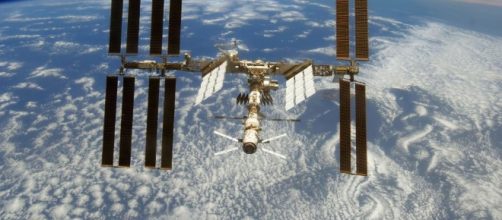NASA recently revealed that, as part of its Journey to Mars program, it intends to build a deep Space Station in lunar orbit. The purpose of such a station would be to test systems that would be needed for the eventual expedition to Mars, which would include a year-long stay by astronauts in the late 2020s.
Dr. Robert Zubrin, a long-time advocate for Mars Exploration and final settlement of the Red Planet, recently took a dim view of the idea in a recent National Review article.
Why is the deep space station a bad idea?
Zubrin believes that nothing can be tested on a space station in lunar orbit that cannot be tested on the International Space Station except exposing astronauts to radiation in cis-lunar space, for which, “a number of Nazi doctors were hanged at Nuremberg.” Zubrin seems to careen into Godwin’s Law territory, since NASA would likely counter that the lunar orbit station would test countermeasures against radiation, including active and passive shielding and biomedical remediation.
Comparisons to Mengele experiments would seem to be over the top.
Zubrin concludes that the sole purpose of the Deep Space station is to give the much criticized and delayed, expensive to operate Space Launch System something to do. The building of the lunar orbiting facility would require four launches of the heavy lift rocket plus one for each subsequent crew sent to stay on the station.
Back to the moon in four years and on to Mars in eight
Instead of the deep space station, Zubrin proposes going back to the moon in four years, primarily to access water ice to refine into rocket fuel that would support an Earth-moon transportation infrastructure as well as voyages into deep space, particularly to Mars.
He believes that such a program would require focus, leadership, and an increase in NASA’s budget to $21 billion a year from its current $19.6 billion a year.
It should be noted that Zubrin has been an advocate of a concept called Mars Direct, launching expeditions to Mars that bypass the moon and uses Martian resources to create rocket fuel needed for the return trip. The concept has been adopted, with certain modifications, by NASA in its Mars planning.
The moon as a refueling stop
However, it looks like Zubrin has accepted the concept of using the moon as a refueling stop, an idea advanced by recent studies conducted by MIT and the NextGenSpace think tank. Using the moon in such a way would tend to reconcile advocates of a return to the moon and those who favor going to Mars as swiftly as possible.
Nevertheless, Zubrin’s schedule that would have people on the moon by the beginning of Donald Trump’s second term and on Mars soon after he leaves office is ambitious, to say the least.


